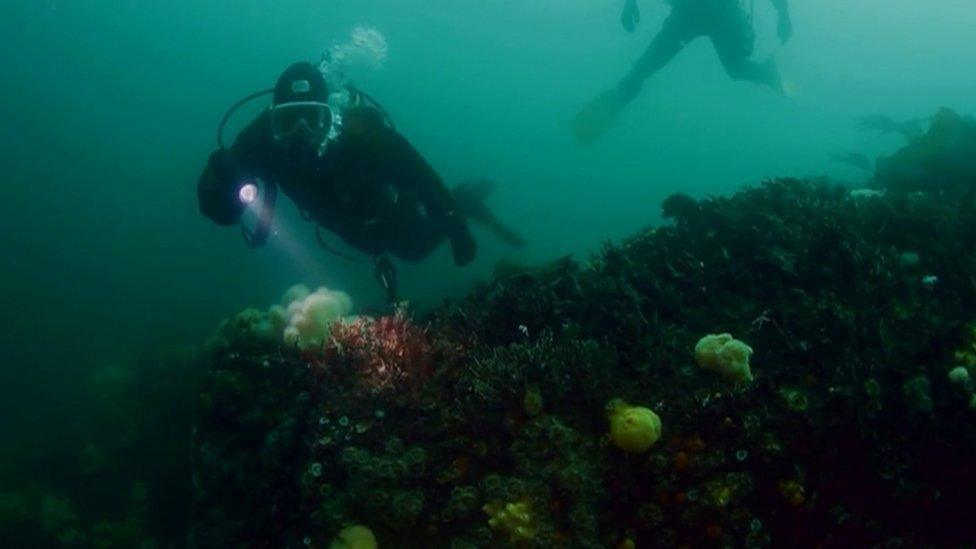Coastal zones: UK's protected 'blue belt' expanded
- Published
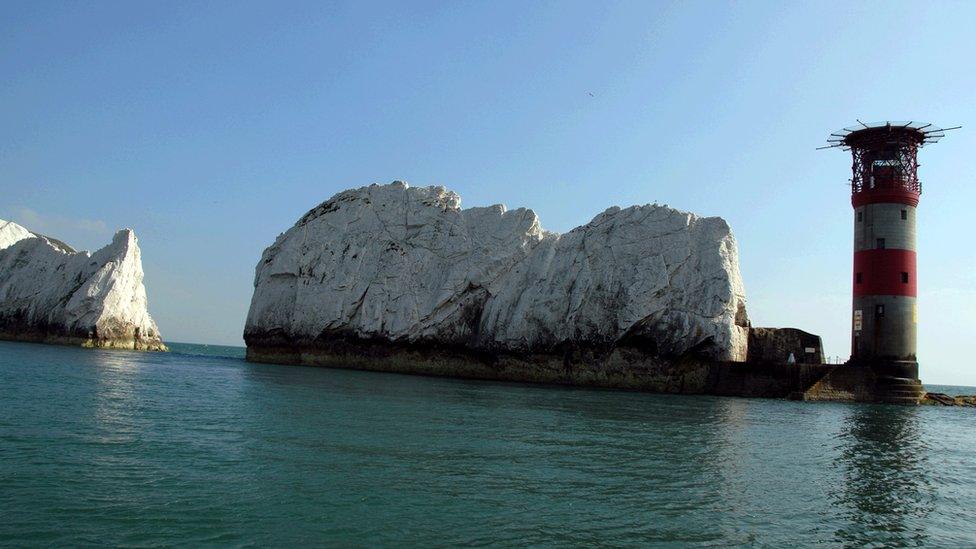
The Needles, off the Isle of Wight, are among the areas designated as a Marine Protection Zone
The UK government has extended the coastal "blue belt" of protected marine areas.
The designation of 23 new Marine Conservation Zones mean that 8,000 square miles of UK waters now have environmental protection.
The announcement has been welcomed by conservation and wildlife organisations.
However they, along with fishermen's groups, are concerned that there is no management plan.
They say it will be difficult to balance competing interests in the reserves.
Originally 127 sites were proposed as MCZs. The government has so far committed to designating 50, covering an area the size of Wales.
The designation of 23 new Marine Conservation Zones (MCZs) means that 20% of English waters are now considered protected. The sites range from the Cromer Shoal Chalk Beds in the North Sea, down to Land's End in the South West.
The aim is to conserve habitats like coral colonies, geological features such as chalk reefs, and species such as the stalked jellyfish and spiny lobsters.

The 23 new Marine Conservation Zones
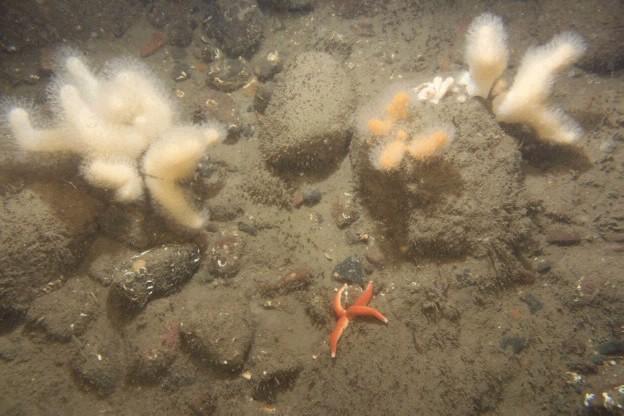
This survey picture from the Coquet to St Marys MCZ in the North-East shows a starfish and corals
North Sea
Fulmar
Farnes East
Coquet to St Mary's
Runswick Bay
Holderness Inshore
Cromer Shoal Chalk Beds
South East
The Swale Estuary
Dover to Deal
Dover to Folkestone
Offshore Brighton
Offshore Overfalls (SE of the Isle of Wight)
Utopia (SW of Selsey Bill)
The Needles
South West
Western Channel
Mounts Bay
Land's End
Newquay and The Gannel
Hartland Point to Tintagel
Bideford to Foreland Point
North-West of Jones Bank
Greater Haig Fras
Irish Sea
West of Walney co-location zone
Allonby Bay

The Marine Environment Minister, George Eustice, said: "It's vital that we protect our marine environment to ensure our seas remain healthy, our fishing industry remains prosperous, and future generations can enjoy our beautiful beaches."
The Wildlife Trusts welcomed the designation of the reserves. Joan Edwards, head of Living Seas at the Trusts, said: "UK seas have the potential to be full of incredible life and colour but continued destruction has reduced them to a shadow of their former selves.
"We are pleased by this government's commitment to addressing the decimation of our seabed over the past century, and to delivering an ecologically coherent network of marine protected areas. This second step towards the completion of a 'blue belt' in UK seas is crucial in turning the tide on the state of our seas but there's still work to be done."

Common brittlestars and common sunstars are among the species shown in this image from the Offshore Brighton conservation zone
However, designation and management are treated as separate processes. So until bylaws or legislation has been put in place, then activities in the reserves will remain largely unchanged.
Paul Trebilcock, from the Cornish Fish Producers Association, commented: "It's madness. A line has been drawn on a map but there is no management plan in place. No-one knows what will and will not be able to continue.
"The majority of fishermen rely on the marine environment being healthy to make a living - they have more interest in keeping it healthy than anybody. To hear the government drawing a line and saying it's all fine doesn't inspire much confidence."
Sam Davies is chief officer for the Inshore Fisheries and Conservation Authority. Her organisation will work with the Marine Management Organisation to find a way of managing the reserves. She said that the new boundaries didn't mean that one day you could take a boat in and the next day you couldn't.
"We now need to fill in the gaps. We are in the early stages of developing management for these areas. We have to understand exactly what species are there.
"Most of the science has been done, but now it's looking at the really fine detail. That involves dropping a camera down there."
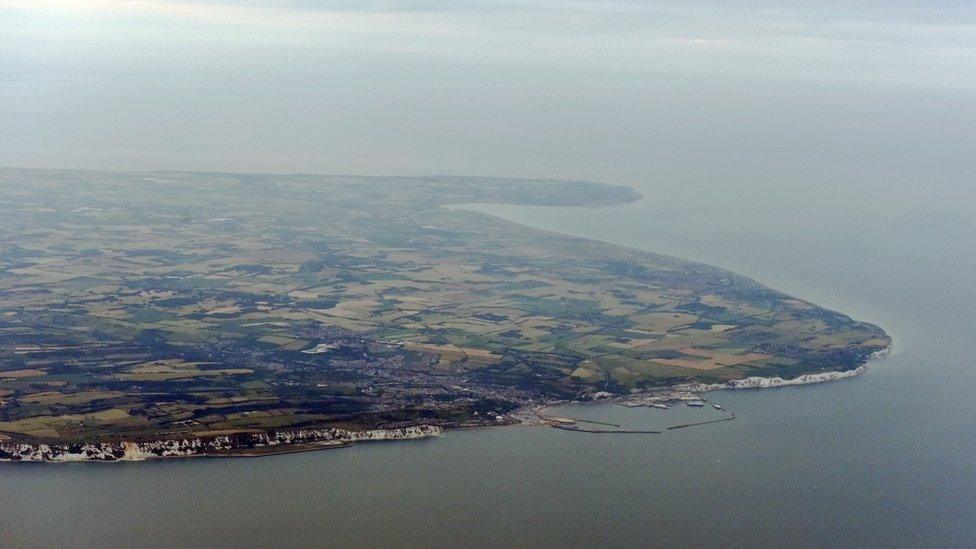
A stretch of coastal waters from Deal to Folkestone will also be protected
Tine Eisfeld-Pierantonio, conservation and policy officer from the Whale and Dolphin Conservation Society (WDCS), said this was "brilliant", but that some sites vital for the protection of whales and dolphins had been left off the list.
"Fourteen sites were taken out without consideration. According to the Marine and Coastal Access Act (2009) the government has to establish a network that protects species - not just habitats - in UK seas. So this isn't creating a coherent ecological network," the WDCS policy officer explained.
The 23 additional sites are the second of three planned phases of MCZs, an obligation set out under the Marine and Coastal Access Act. The last will be put out to consultation in 2017, and designated in 2018.
A spokesperson for the Department for Environment, Food and Rural Affairs commented: "Defra and delivery partners are working together with stakeholders to ensure that management measures are put in place within two years of designation and that measures provide effective protection for designated sites."
There is also other work being done by the government to protect the marine environment, with consultations being held on Special Areas of Conservation (SACs) for harbour porpoise, and Special Protection Areas (SPAs) to protect the feeding and bathing areas of iconic birds.
Follow Claire on Twitter, external.
- Published13 January 2016
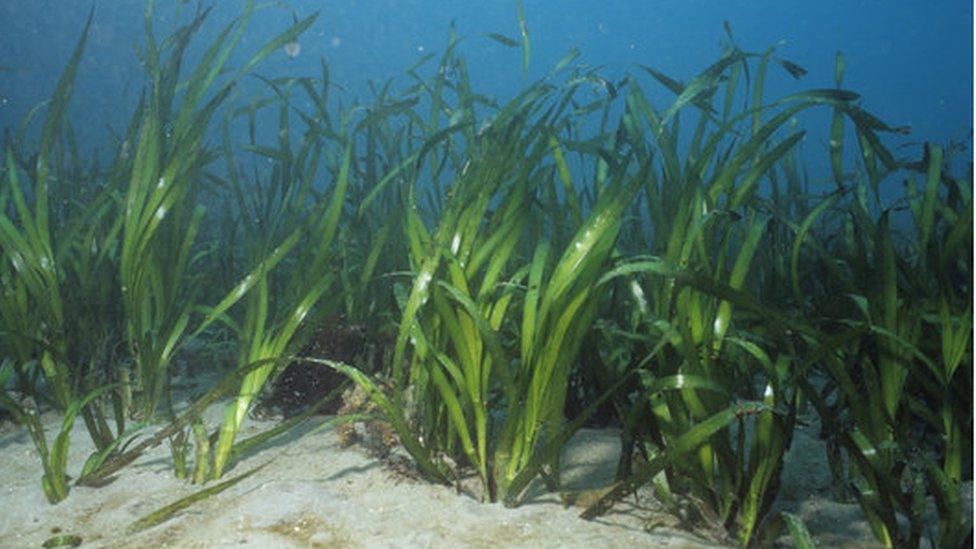
- Published6 August 2015
